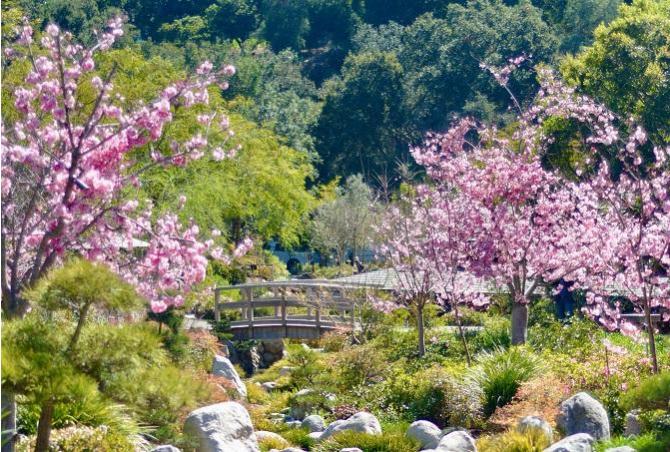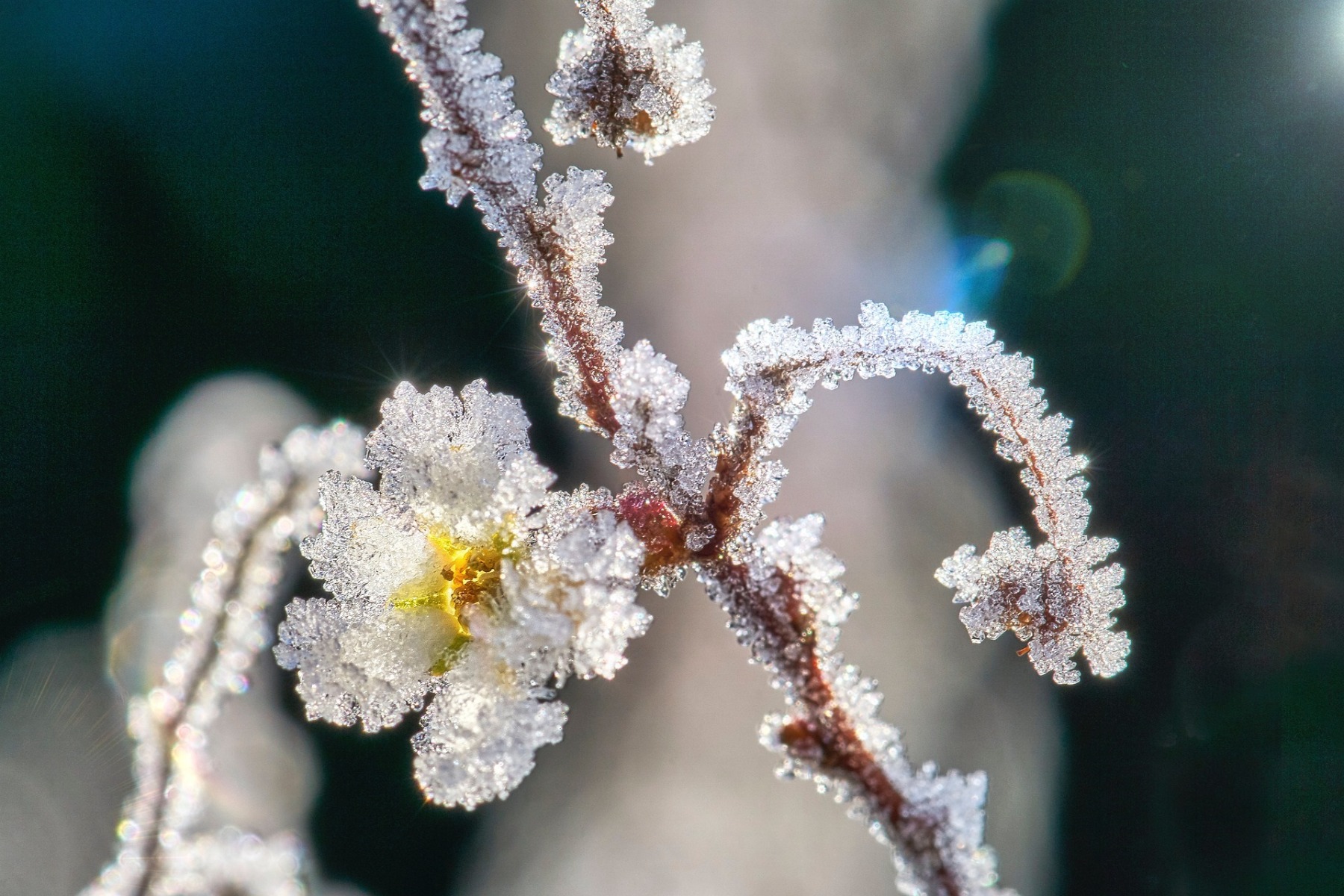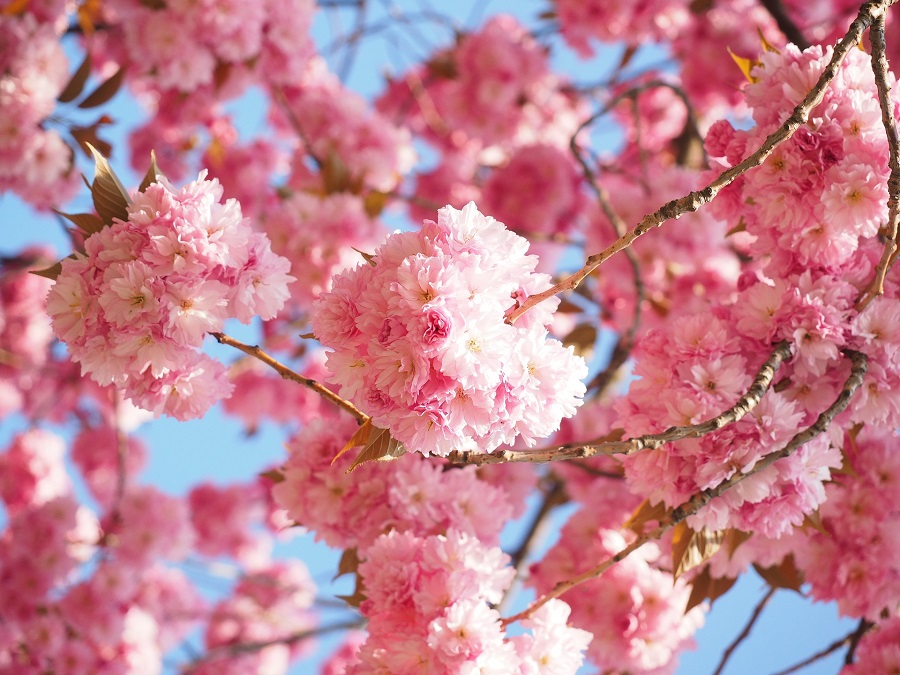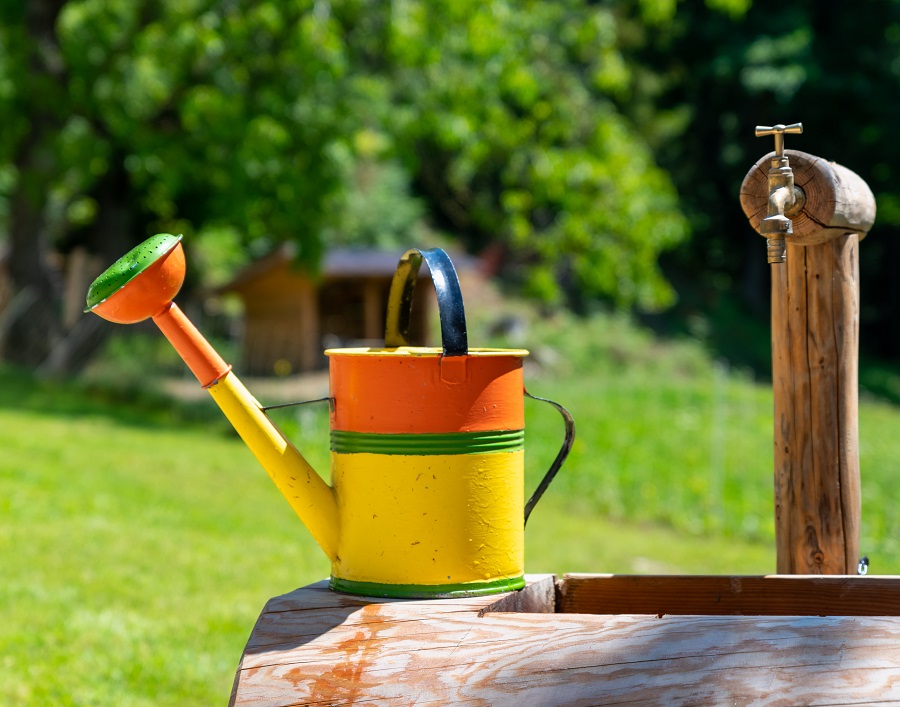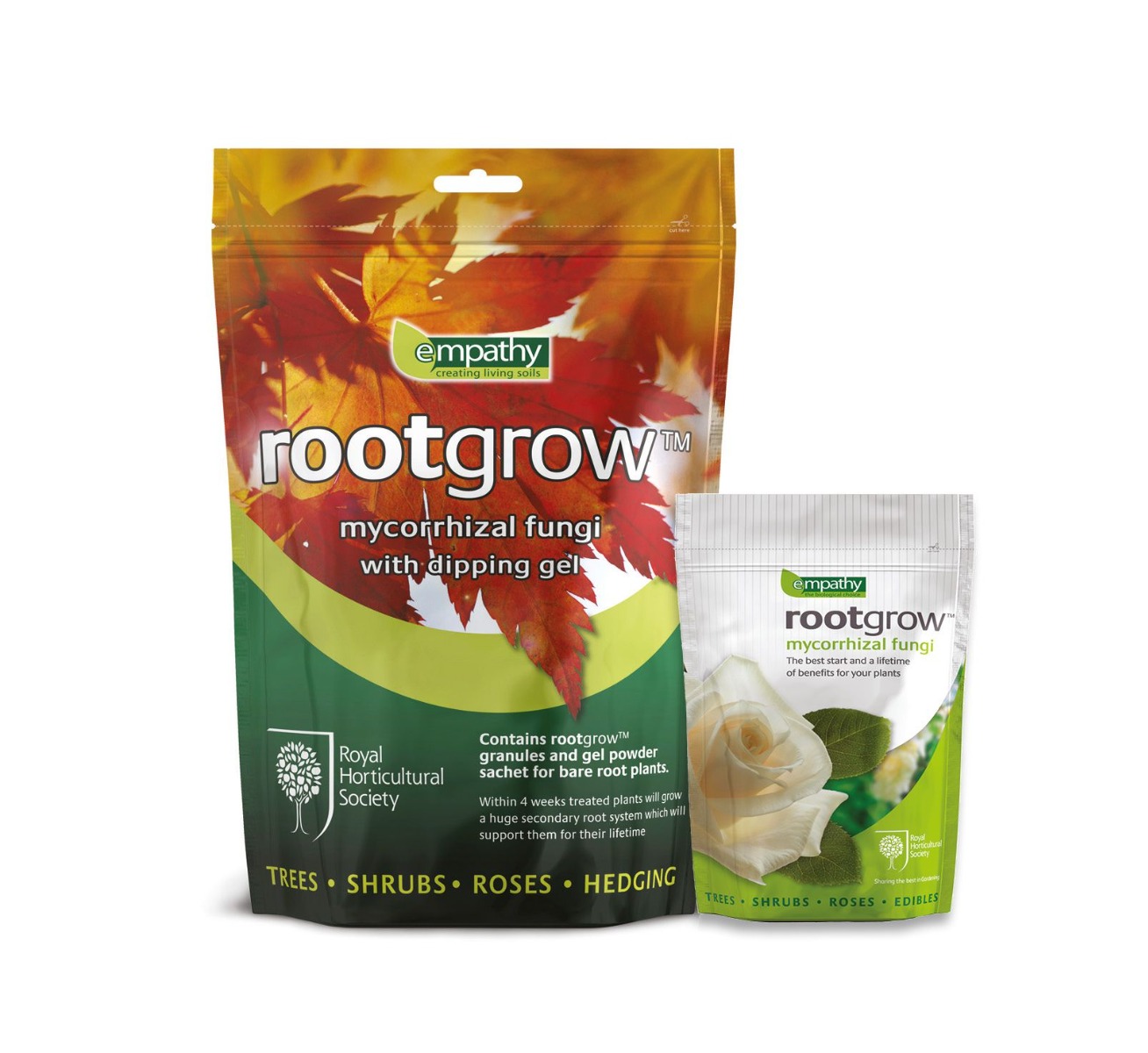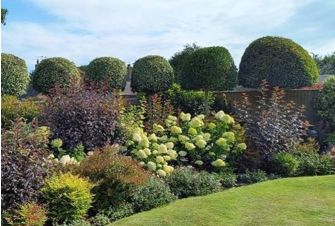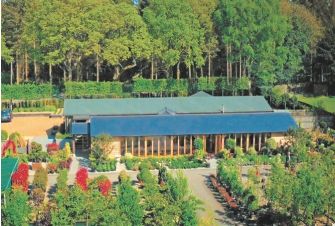It's Spring. Expect the Unexpected!
Wise gardeners in the UK should expect the unexpected during spring!
Both April and May can be unpredictable months, in terms of weather. Temperatures during the month of April have been recorded at lower than -15°C and higher than 29°C. May has seen temperatures as low as -9°C and up to 33°C. It's clear to see that many plants will struggle in such circumstances.
Appropriate soil conditions are essential in order to support all types of plants. This doesn't necessarily mean rich, fertile and loamy ground. A drought-loving lavender, for example, isn't likely to thrive in a heavy clay environment in shade, or on the boggy pond margin. It needs free-draining, relatively poor soil in full sun. But during its first few seasons, however, it will need water to enable it to establish a good root system. Damp-soil lovers such as willow trees are unlikely to enjoy a full-sun position on top of a free-draining hill unless they are given plenty of water on a regular basis. Planted within a fairly inhospitable position, these trees are likely to need extra water on a long-term basis.
Six Top Tips for your Spring Garden
The garden is awake in April and some plants need your help in order to thrive. Here are our six top tips for a successful start to the growing season:
- Most importantly: water young plants during a dry spell. It takes around two years for them to establish a healthy root system and they are unable to do this effectively in dry soil. Test the soil to see how it feels a few centimetres under the surface. If it's dry, it needs watering. Water thoroughly once or twice per week rather than little and often. It needs to reach the roots at the bottom rather than encouraging a shallow root system.
- If you have plants in pots and containers, these need watering every day during exceptionally dry spells.
- Looking forward to a holiday? Remember to arrange care for your young plants and your containers! Call on friends and neighbours to visit in your absence.
- To help conserve water in the soil for those plants that need it, consider adding a mulch to the surface of damp soil. Mulches are best applied in early to mid spring. This will help to suppress the growth of weeds and conserve moisture. The ideal depth is at least 5cm. Take care not to pile the mulch against woody stems. Biodegradable mulches include home-made compost, processed bark, wood chippings and seaweed. There are non-biodegradable mulches too, including slate chippings, gravel, pebbles and aggregates. The use of mulch mats provides an easy answer for newly planted trees and shrubs.
- Keep an eye on the weather forecast. If frost (or snow) is predicted, cover blossom on fruit trees or your summer crop will be affected. Horticultural fleece is ideal, but make sure you secure it so that the winds can't whip it away.
- Some ornamental landscaping plants including trees and shrubs can benefit from occasional feeding during spring. A balanced fertiliser such as Growmore can be sprinkled over the root area and gently hoed into the surface of the soil. It will help to nourish young plants if the soil is lacking in nutrients. This multi-purpose plant food provides nitrogen, potassium and phosphorus. Although it can be applied regularly from April, use sparingly and this will avoid too much fast, soft growth that can be damaged by weather conditions.
Planning to Plant a Tree for the Jubilee?
This is the time to plan for this important event - but not only in order to celebrate The Queen's historic 70-year-reign in style. The planning for after-care of newly planted trees and shrubs is as essential as the sourcing of the plants, if they are to survive. Communities and individuals will be celebrating the Platinum Jubilee of Her Majesty during an extended bank holiday, from Thursday 2 June through to Sunday 5 June. Find out more HERE.
There has already been a hugely positive drive to add to the Queen's Green Canopy. This has been gradually gaining momentum and many towns, villages, communities and individuals have already joined the movement to Plant a Tree for the Jubilee, with a record being entered on an interactive map. Others are looking forward to planting during the extended bank holiday weekend.
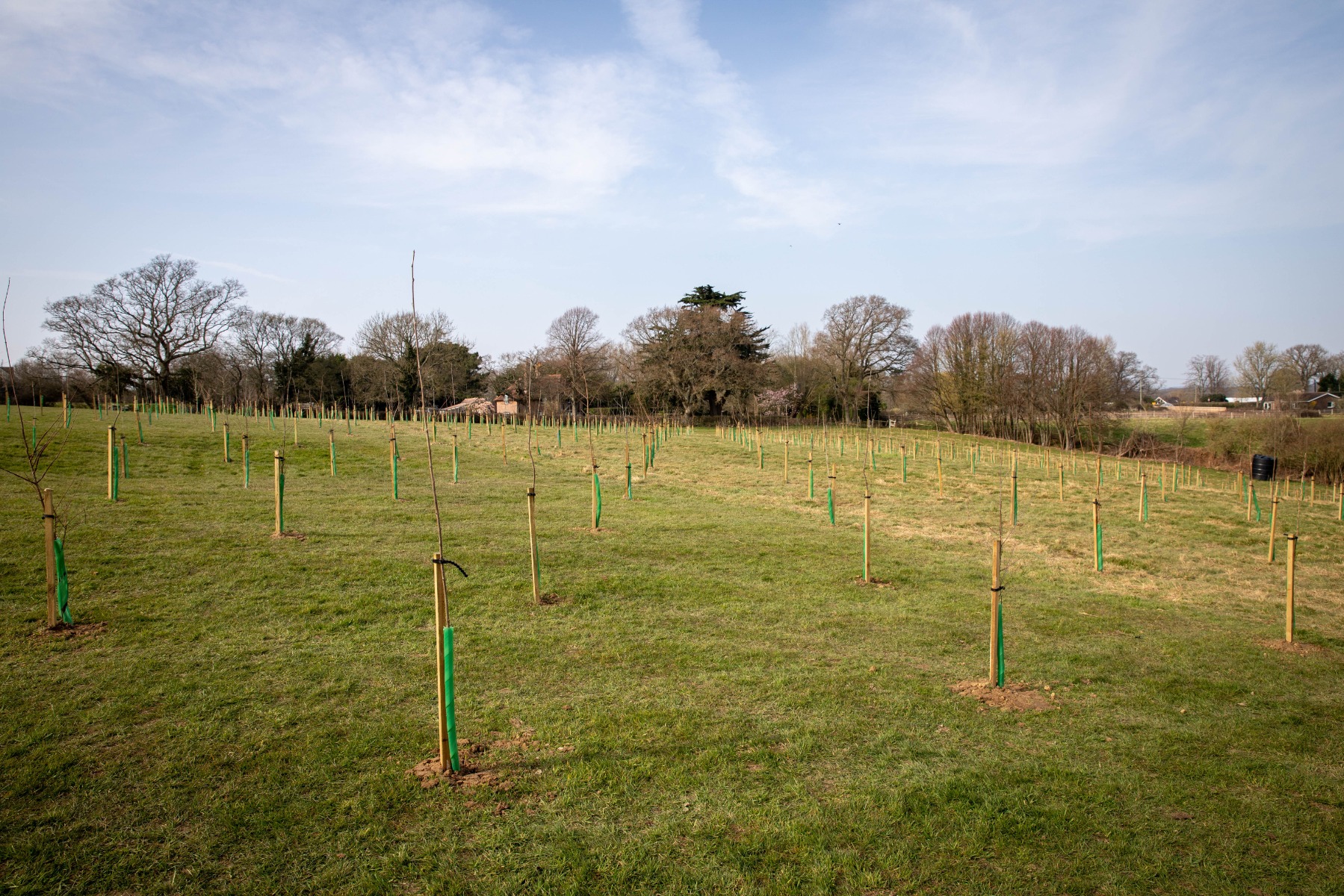
The above and below photos show the first stage in Bede’s School's Queen's Green Canopy planting programme. The school has pledged to plant 1,200 trees at the Senior School site in Upper Dicker, East Sussex, with another 800 trees to be planted later in autumn. The 2,000 trees represent every pupil and staff member, contributing to a greener landscape and a better future for all. Don't forget to water them, Bede's School!
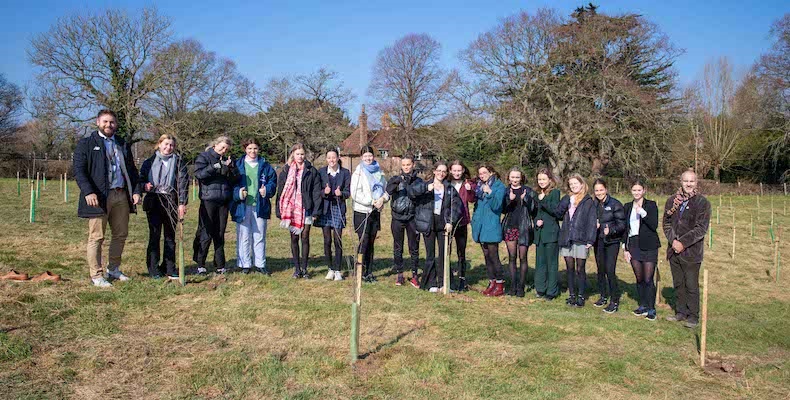
Containerised trees can be planted at any time of year, unlike bare root plants that need to go into the ground during the dormant season. But, there is a responsibility attached to the activity of planting at a time which is less than ideal. A tree is not just for the Platinum Jubilee, but for life. After the press photos, celebrations and parties have faded into memory, the tree needs watering and after-care on an ongoing basis. At the very least, for two years after planting, then regular inspections for many years to come. Who will perform this important task? The problem with planting within a community space can be that there is no single person to take ownership of the responsibility. Everyone thinks someone else has taken care of it. Hence the need for forward planning and a structure of aftercare. Perhaps a team of people could be appointed, or a rota. Maybe those who live the closest would be willing to take on the task. Don't leave it to chance: the young tree is likely to die!
Getting to the Root of the Matter
DID YOU KNOW? Roots grow the most in late spring through early summer. But to be able to do this, they need to be established. Newly planted trees and shrubs are unable to grow until they have developed a sustaining root system. This generally takes at least two years.
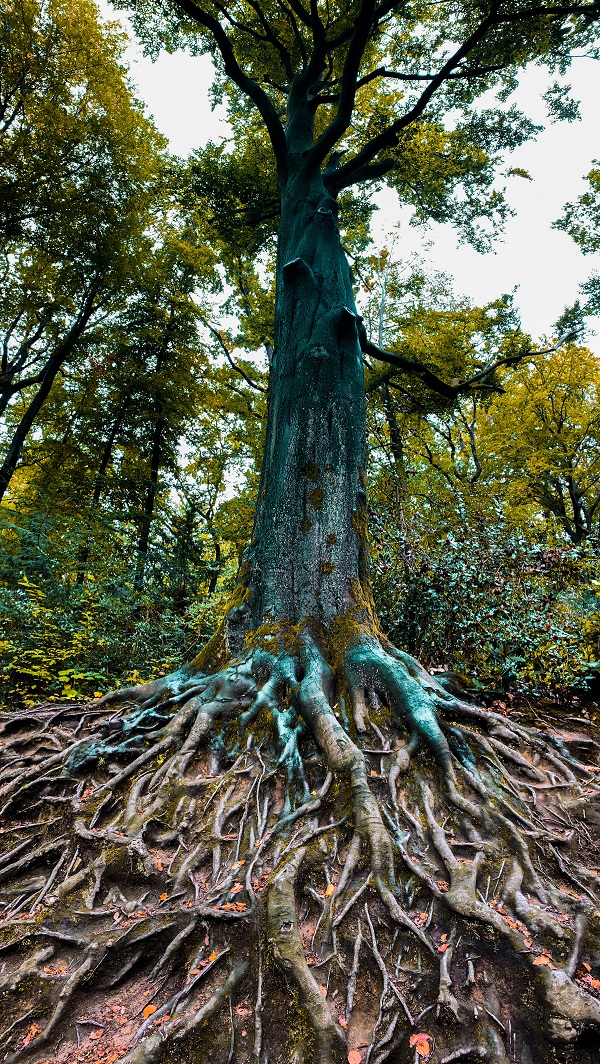
The photo shows an established tree growing on a bank that has subsequently been eroded. You will notice that the roots are fairly shallow. This is typical as they rarely extend beyond one to two metres down into the soil, even at maturity. There are exceptions... oak and walnut trees tend to develop a deeper taproot. And there are records of a wild fig tree in South Africa that had a tap root measuring around 400ft deep.
A Symbiotic Relationship
Whatever the tree species, it should eventually be self-sustaining provided the right plant is put in an appropriate setting. This is largely due to the development of a symbiotic relationship with the soil and the environment. But this takes time to develop. Fungal fine threads called mycelium are a key component in the health and success of a tree. These gradually spread far and wide - further than established tree roots They capture water and nutrients and bring them back to the tree. In return, the tree gives the fungi sugars which it manufactures during the process of photosynthesis in its leaves. This is why it's always an excellent idea to add mycorrhizal fungi during the planting process.
All long-term garden and landscape plants will benefit from the addition of mycorrhizal fungi at planting time. It applies to shrubs, climbers and perennials in addition to trees. When Rootgrow mycorrhizal fungi is used during the planting process it takes just four weeks or so for the benefits to show, provided there is enough water for the process to begin. During this short period of time, the fungi attach themselves to the root system and grow out into the surrounding soil, finding nutrients and water.
Help is Available! English Woodlands Can Provide Tree and Shrub Selection Advice, also Planting Services
If you need advice regarding the selection of the most appropriate tree or shrub for your space, the specialists at English Woodlands are always pleased to help! Phone us on 01435 862 992 or come for a visit to:
Burrow Nursery
Cross in Hand
Heathfield
East Sussex
TN21 0UG
Spring is a wonderful time outdoors. Make the most of every minute, but never forget to plan ahead to ensure your gardening efforts enjoy long-term success.

